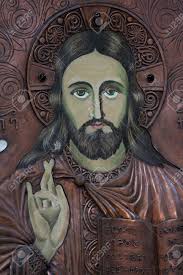A More God-like Christ Part 3
Here follows the continuation of my book review of “A More Christ-like God” by Bradley Jersak:
I do not deny Jersak’s happier metaphors from Jesus, although defining repentance as merely being “welcomed in” from page 233 is a weak definition. But he conveniently leaves out so many more metaphors: Jesus teaches us to fear the One who can throw both body and soul into hell fire. Jesus speaks of the wide road that leads to destruction. The message of repentance from Matthew 4:17 and 10:28 is given in the context of John the Baptist’s ministry, which Jesus carries on, including his description of Messiah: having a winnowing fork and burning up the chaff with unquenchable fire. Those who do not believe stand condemned already… We get the picture of being thrown into hell not from the Old Testament or even from Paul, but from Jesus’ Sermon on the Mount. Not only does Jesus speak of some not entering the Kingdom of Heaven from 5:20, but here He speaks of hell fire: 5:22 and 30. He speaks of the wide road of destruction: 13, of God not forgiving those who refuse to forgive :15, of casting away evil-doers :23, and then right after the Sermon on the Mount we see that the demons fear being tortured by Jesus the Son of the Living God in the flesh- 8:29- at an appointed time that they are all aware of, Jesus comes with a sword in 10:34 and brings words of judgment on cities 11:20-24, He speaks of folks never being forgiven either in this life or the one to come in 12:32, condemns a wicked and adulterous generation in 12:39-42; gives a metaphor of the wicked as being burned like weeds in a fire in 13:30, casting those who cause sin and law-breakers into a fiery furnace where there will be weeping and gnashing of teeth, and again in :50. In Chapter 18:6,8 and 9 he speaks of such punishment for the wicked that it would be better to have a millstone tied around the neck and be thrown into the sea because they lead little ones astray, a clear call for justice, and goes on to describe those who lust as being cast into hellfire that is eternal. In verse 35 He explicitly ends the parable and interprets it for us by telling us that His Father will likewise hand us over to be tortured to pay off our debt to Him… The metaphor of putting wretches to a miserable death and giving the vineyard to others can’t be missed in 21:41 and in 22:13 the metaphor is of a man being tied up and thrown out into the darkness where there is weeping and gnashing of teeth. The entire chapter of 23 is a stirring judgment against the Pharisees, even asking them who would save them from the coming wrath- how will they escape being sentenced to hell on judgment day? Who sentences them? The Judge of all, of course. We get all of these metaphors, not from the Prophets or the Apostles, but from Jesus Christ Himself and we are informed by these metaphors very much as to what God is like. In Matthew 24:50 the master comes at an unexpected hour and cuts the abusive servant in pieces, throwing him outside with the hypocrites where there is weeping and gnashing of teeth. It is the same in 25:30, 31-46 where we develop of our understanding of eternal punishment, since that is in fact how to best translate the Greek of 25:46. And those are the relevant metaphors just from the Gospel of Matthew.
But we must first come to the Crucifixion itself, which is where Jersak takes us in Chapter 12 and following. Here he describes all atonement theories except his own as doctrines of men, ascribing his own view of the Gospel as the only Gospel, or the Gospel itself. At first it seems he will only describe the Gospel in terms of Jesus’ life, death and resurrection. But then it becomes very clear that he takes the expiation theory of atonement and holds it up as the only Gospel. (If the reader is not familiar with this, it is a pretty old argument within Evangelicalism and arguably within the Church historical, between whether man is actually in an impossible bondage to sin through its rebellion against God and thus God is in a posture of punishment towards mankind which Jesus dies to set us free from by appeasing God’s wrath, taking away our guilt, and suffering death for us OR if man is actually able in himself to choose God and only the guilt of mankind stands in the way of full reconciliation which Christ took away by suffering death for us. The first view is called Propitiation and the second view is called Expiation.) Jersak claims that we make a mistake when we make our theories tantamount with the Gospel itself, but then he makes this very mistake in writing that “Christus Victor is “an indisputable New Testament metaphor.” (p.229) Propitiation is the best translation of the Greek word, hilasmos, to make atonement for as by appeasing the wrath of. It is used both by Paul and John the Apostles.
(Next time Part 4…)
